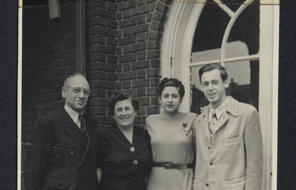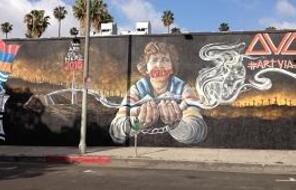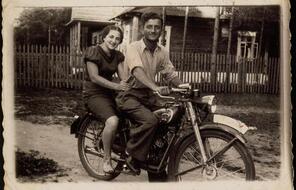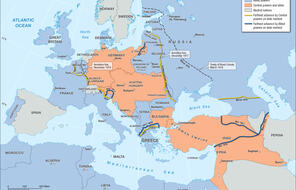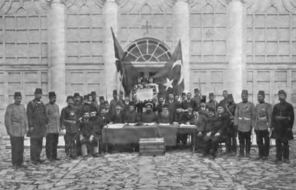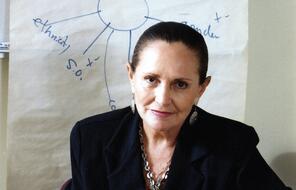The Voices of Millions
At a Glance
Language
English — USSubject
- Civics & Citizenship
- Social Studies
- Human & Civil Rights
- The Holocaust
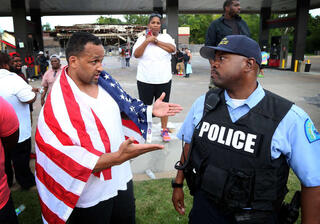
Explore the Unit
Teach a unit on civic participation in today's digital landscape using the events in Ferguson, Missouri, as a case study.
After internet use became widespread in the 1990s, anyone who could go online gained a new set of tools for sharing information, speaking out, and organizing responses to crises and problems that included natural disasters and mass violence. Today, millions of people use social media to express their opinions about issues in their local, national, and global communities. But although the internet has made civic participation easier, some people wonder whether online activism really makes a difference.
On March 25, 2013, the Human Rights Campaign (HRC)—an organization that supports lesbian, gay, bisexual, and transgender rights—urged people to change their Facebook profile pictures to a pink-on-red equals sign to show support for marriage equality. That week, the Supreme Court of the United States was debating a case that involved gay marriage. One day later, hundreds of thousands of people had changed their profile pictures to the HRC symbol.
There is little evidence that the HRC Facebook campaign had any effect on the deliberations of the Supreme Court justices. And critics of the campaign worried that too many of those who changed their profile pictures felt satisfied that by taking this relatively easy action, they had “done their part” to support marriage equality. Some critics of online activism have coined terms like “hashtag activism” and “slacktivism” to describe efforts such as the HRC profile-picture campaign that require little real participation. Scott Gilmore, a former Canadian diplomat, writes:
A slacktivist is someone who believes it is more important to be seen to help than to actually help. He will wear a T-shirt to raise awareness. She will wear a wristband to demonstrate support, sign a petition to add her voice, share a video to spread the message, even pour a bucket of ice over her head. The one thing slacktivists don’t do is help by, for example, giving money or time to those who are truly making the world a better place . . . 1
Many experts disagree with the skeptics. They argue that the collective voices of groups of internet users can make a real difference. Discussing the HRC campaign, Matt Stempeck, a researcher at the MIT Center for Civic Media, writes:
No one taking these actions is expecting a direct response from the Supreme Court. . . . Yet this action, taken by many, can matter. We know that support for gay marriage is linked with how likely it is we know someone who is openly gay. And we know that people care deeply about societal norms [social standards]. Ever-increasing support for gay equality, generated at the interpersonal level, is only strengthened by a mass outpouring of support on social networks. . . . By going pink, people are standing up as allies and creating the perception of a safe space within their own friendship communities online—spaces where gay people may face stigmas and bullying. 2
On August 10, 2014, teenager Tyler Atkins posted these images on Twitter accompanied by the following tweet: “#IfTheyGunnedMeDown which picture would they use.”
In 2014, another online campaign suggested that the collective voice of a group of social media users can influence not just individual attitudes but also the behavior of institutions, such as the print and broadcast media. After an African American teenager was shot to death by a police officer in Ferguson, Missouri, in summer 2014, thousands of people used Twitter to protest the photograph of the teenager, taken from his Facebook page, that was published by many television networks, newspapers, and websites. Journalist James Poniewozik analyzed the online protest:
The injury, a deadly one, came first. Unarmed 18-year-old Michael Brown was shot to death by police in Ferguson, Mo. Then came the insult: many news accounts used a photo of Brown that showed him, unsmiling, gesturing at the camera in a way that led to unsubstantiated claims that he was “flashing gang signs.”
This portrayal of Brown, who is African American, recalled the quasi-trial-by-photo of Trayvon Martin, another young black man shot to death. It became another racially charged statement in a controversial killing, as outlets illustrated their stories with pictures that—rather than show the dead teen smiling or in a family context—led commenters to call him a “thug” and thus to suggest that he brought his death on himself.
So as people protested in the streets of Ferguson, a meta-protest began on social media. Twitter users, especially African Americans, began a meta-protest, posting pairs of photos with the hashtag #IfTheyGunnedMeDown: a young man in a military dress uniform, say, and the same poster flipping off the camera. If I got shot down, each post asked, which version of me would the media show you?
The term “hashtag activism” has become a kind of putdown lately, with the connotation that it’s substituting gestures for action, as if getting something trending is a substitute for actually going out and engaging with the world . . .
But #IfTheyGunnedMeDown was a simple, ingenious DIY [do-it-yourself] form of media criticism: direct, powerful, and meaningful on many levels. It made the blunt point that every time a media outlet chooses a picture of someone like Brown, it makes a statement. It created identification: so many ordinary people—students, servicemen and women, community volunteers—could be made to look like a public menace with one photo dropped in a particular context. And it made a particular racial point: that it’s so much easier, given our culture’s racial baggage, for a teenager of color to be made to look like a “thug” than [a] white teen showing off for a camera the exact same way.
It was a brilliant media critique, and while Twitter and other platforms may have no magical power to stop shootings or catch warlords, one thing they are very good at is catching the attention of the media. Journalists pay attention to Twitter—disproportionate attention, maybe—and that makes it a very, very good place to deliver the modern version of a letter to the editor . . .
#IfTheyGunnedMeDown is not going to stop anyone from being gunned down, but it most likely lodged in the memory of editors and producers who make judgments every day. Sure, many of them are already aware of the power of image choices, but #IfTheyGunnedMeDown chose its own images to make a powerful statement—one that people are likely to remember the next time “if” becomes “when.” 3
- 1Scott Gilmore, "The problem with #slacktivism," Maclean’s, last modified November 11, 2014, accessed September 2, 2015.
- 2J. Nathan Matias, Matt Stempeck, and Molly Sauter, "Green vs. Pink: Change Your Picture, Change the World," MIT Center for Civic Media, blog entry, posted March 28, 2013, accessed July 26, 2016.
- 3James Poniewozik, "#IfTheyGunnedMeDown and What Hashtag Activism Does Right," TIME online, last modified August 11, 2014, accessed September 2, 2015.
Tyler Atkins' Twitter Post
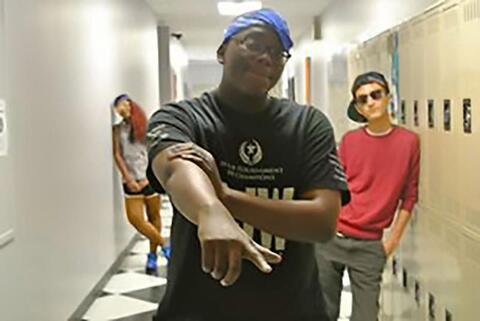
Tyler Atkins' Twitter Post
On August 10, 2014, teenager Tyler Atkins posted these images on Twitter accompanied by the following tweet: “#IfTheyGunnedMeDown which picture would they use.”
Tyler Atkins Twitter Post
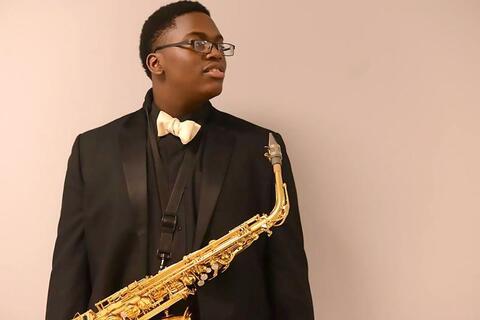
Tyler Atkins Twitter Post
On August 10, 2014, teenager Tyler Atkins posted these images on Twitter accompanied by the following tweet: “#IfTheyGunnedMeDown which picture would they use.”
Connection Questions
- Why have some people criticized online activism?
- What do the two examples of online activism described in this reading have in common? How are they different? How might these online efforts have influenced the perspectives and choices of those who saw them?
- Do you think that online activism can influence social norms, or the beliefs and behavior that a community finds acceptable? Do you think online activism can influence people’s choices when they aren’t online?
- How might the internet and social media affect the ways that people define "we" and "they"? In what ways might the internet and social media be useful in breaking down divisions in society? In what ways might these platforms be used to deepen or amplify those divisions?
How to Cite This Reading
Facing History & Ourselves, "The Voices of Millions," last updated August 2, 2016.





